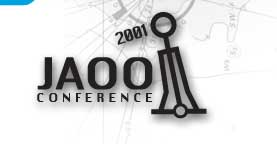<bigwig> service: jaoo
BIO:
Craig Larman is the author of "Applying UML and Patterns--An Introduction to
Object-oriented Analysis and Design, and the Unified Process." The first edition is the
world's best-selling text on object-oriented analysis and design, translated to seven
languages. The new second edition also introduces the Unified Process (UP), with a
foreword by Dr. Philippe Kruchten, the lead architect of the Rational Unified Process
(RUP). Larman also co-authored the "Java 2 Performance and Idiom Guide".
He is a popular conference speaker and board member, at events such as OOPSLA
and Software Development.
Recent articles include "How to Fail with the RUP: Seven Steps to Pain and Suffering,"
(co-authored with Kruchten).
Craig serves as Director of Process at Valtech, an international consulting group
with divisions throughout Europe and the USA. At Valtech, he led the project to adopt
the UP worldwide for development work with customers. His focus is helping organizations
apply the UP and iterative development, combined with agile development practices from
the XP. With Valtech, he has provided guidance to IT leadership at Chase Manhattan Bank,
Sprint, Reuters, Siemens, Enron, Kemper, Cartier, and Ericsson, among others, on the
adoption of an "agile UP."
Craig has worked with software since the 1970s, and helped organizations apply object
technologies and new processes since the mid 1980s. He holds a B.Sc. and M.Sc.
in computer science, with research emphasis in artificial intelligence (having none
of his own).
Tutorial Thursday 13 September, Half day
Agile UP
The Unified Process (UP) has emerged as a popular modern process for software development.
It includes best practices such as iterative-adaptive incremental development and early
attention to high risks. Furthermore, the UP encourages flexible adoption within its
process framework.
Contrary to some misperception, the UP encourages a relatively light "lean and mean"
approach. In addition, some XP practices and values can be applied in the context of
the UP. Nevertheless, this tutorial motivates the need for more than pure XP on many
projects, and promotes the skillful capacity of the UP to provide a variety of optional
practices and artifacts on larger or higher-ceremony projects. You will learn why a
combination of primarily the UP with some XP practices is an excellent process approach.
In this tutorial you will learn the essential and most useful UP concepts and practices,
and how to apply them in a light, agile spirit-Agile UP. You will also learn what XP
practices do and do not complement the UP, and how to adopt the UP with some XP practices
within an organization.
|
|

|



